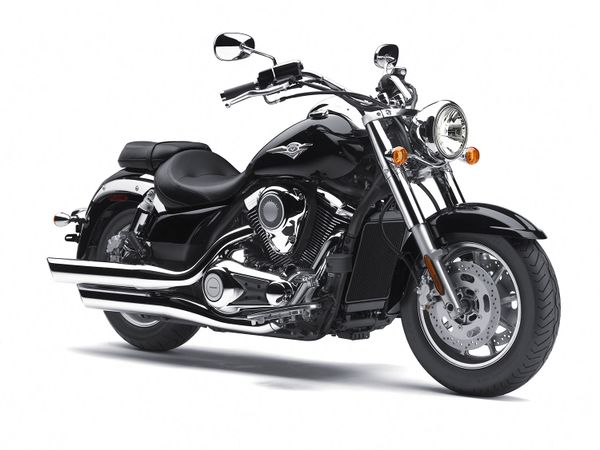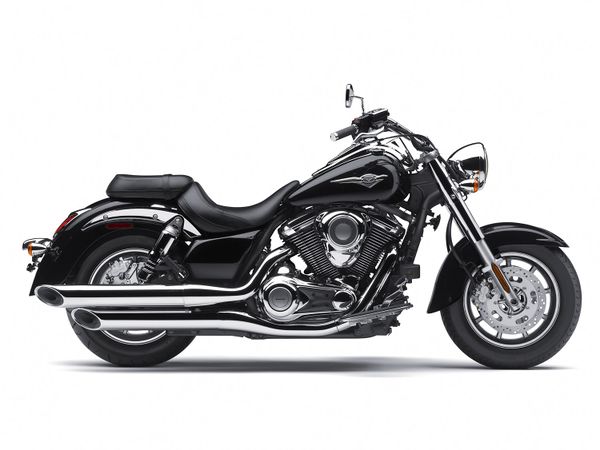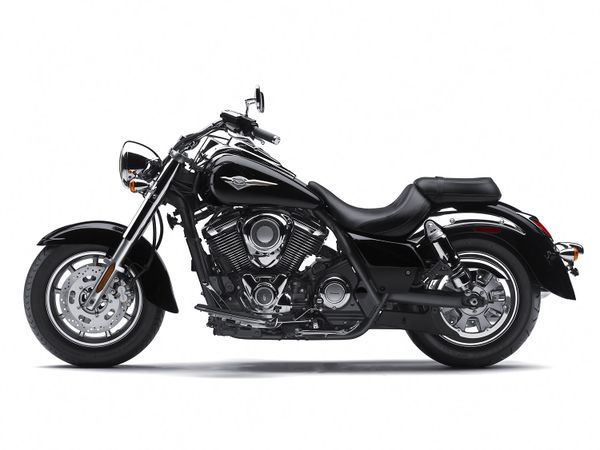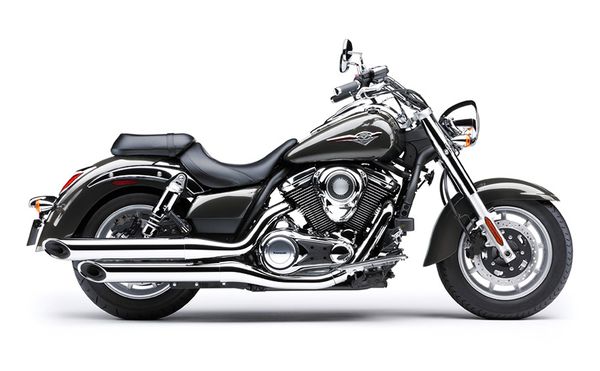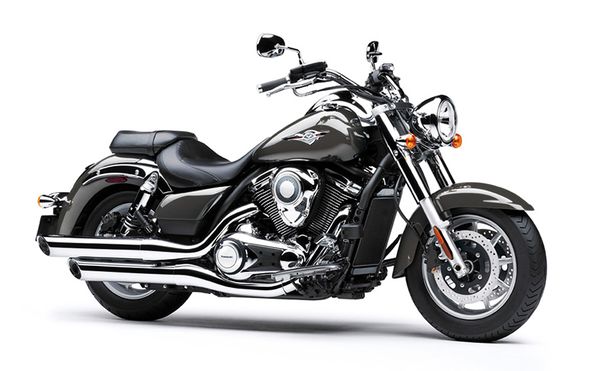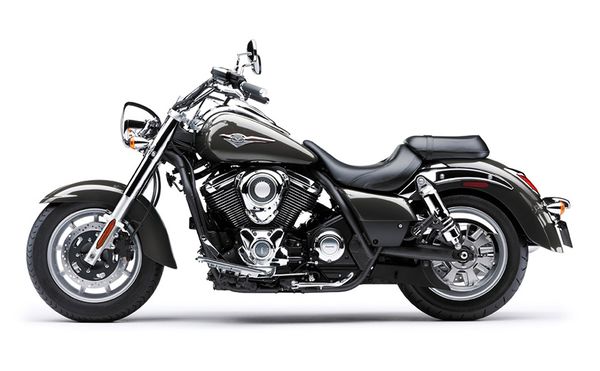Kawasaki Vulcan 1700 Classic
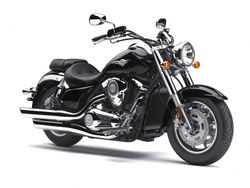 |
|
| Kawasaki Vulcan 1700 Classic | |
| Manufacturer | |
|---|---|
| Also called | Vulcan 1700 Classic LT |
| Production | 2009 - 2014 |
| Class | Classic |
| Engine | v2, four-stroke |
| Bore / Stroke | 102.0mm x 104.0mm |
| Compression ratio | 9:5:1 |
| Horsepower | 72.15 HP (53.8 KW) @ 5000RPM |
| Torque | 107.98 ft/lbs (146.4 Nm) @ 2250RPM |
| Fuel System | injection. digital fuel injection, dual 42mm throttle bodies |
| Ignition | tcbi with digital advance |
| Transmission | Gear box: 6-speed Final Drive: belt |
| Suspension | Front: 43mm hydraulic fork / 5.5 in. Rear: swingarm with twin air-assisted shocks, with 4-way rebound damping / 3.1 in. |
| Brakes | Front: double disc. two-piston calipers. Rear: single disc |
| Front Tire | 130/90-16 |
| Rear Tire | 170/70-16 |
| Wheelbase | 65.59 inches (1666 mm) |
| Length | 98.39 inches (2499 mm) |
| Width | 40.39 inches (1026 mm) |
| Height | 45.51 inches (1156 mm) |
| Seat Height | 28.31 inches (719 mm) |
| Weight | 345.2 kg (wet) |
| Recommended Oil | K-tech 10W-40 |
| Fuel Capacity | 5.3 Gallon (20.06 Liters) |
| Manuals | Service Manual |
The Kawasaki Vulcan 1700 Classic was a v2, four-stroke Classic motorcycle produced by Kawasaki between 2009 and 2014. Max torque was 107.98 ft/lbs (146.4 Nm) @ 2250 RPM. Claimed horsepower was 72.15 HP (53.8 KW) @ 5000 RPM.
Engine[edit | edit source]
The engine was a liquid cooled v2, four-stroke. A 102.0mm bore x 104.0mm stroke result in a displacement of just 1700.0 cubic centimeters. Fuel was supplied via a single overhead cams (sohc).
Drive[edit | edit source]
The bike has a 6-speed transmission. Power was moderated via the wet multi-disc, manual.
Chassis[edit | edit source]
It came with a 130/90-16 front tire and a 170/70-16 rear tire. Stopping was achieved via double disc. two-piston calipers. in the front and a single disc in the rear. The front suspension was a 43mm hydraulic fork / 5.5 in. while the rear was equipped with a swingarm with twin air-assisted shocks, with 4-way rebound damping / 3.1 in.. The Vulcan 1700 Classic was fitted with a 5.3 Gallon (20.06 Liters) fuel tank. The wheelbase was 65.59 inches (1666 mm) long.
2012 Kawasaki Vulcan 1700 Classic[edit | edit source]
The 2012 MY Kawasaki Vulcan 1700 Classic embodies all the elements you would expect from a classic cruising motorcycle. A muscular, chrome finished V-twin catches your glance from the very start, coupled with the twin-barreled, single-sided exhaust system. The modern fuel injection and some fine-tuning in the exhaust department maximize the Vulcan's "asphalt-wrinkling" capabilities.
The double-cradle with box-section single-tube backbone steel frame makes it easily maneuverable on the tight city streets, but sturdy enough to be taken on long highway trips as well. Also, the 9-spoke cast wheels allow the rider use of tubeless tires, to further accentuate the muscular overall styling of the bike and making a flat tire less of a big problem.
Whether you want to take a stroll on the boulevard at the end of the day, or you want to take a week-long cruise across the continent, the 2012 MY Kawasaki Vulcan 1700 Classic is a great choice.
2013 Kawasaki Vulcan 1700 Classic[edit | edit source]
The 2013 MY Kawasaki Vulcan 1700 Classic has been designed with the same retro look of a typical American motorcycle, born and bread for the open road. A brawny V-twin with a displacement of 1700cc breathes out through dual staggered mufflers with a powerful and rich sound. And they also look good, adding a dash of custom DNA to the build.
For more comfort and better handling, the Vulcan has been designed with 9-spoke cast wheels, which allow the use of tubeless tires to complement the chassis' excellent handling capabilities, as long as you stick to asphalt.
The bodywork has been a primary concern for Kawasaki in this model. The fuel tank has hand-sculpted contours to add to the overall beauty of the motorcycle and the taillights are LED, which help both with the visual aspect and the financial one.
